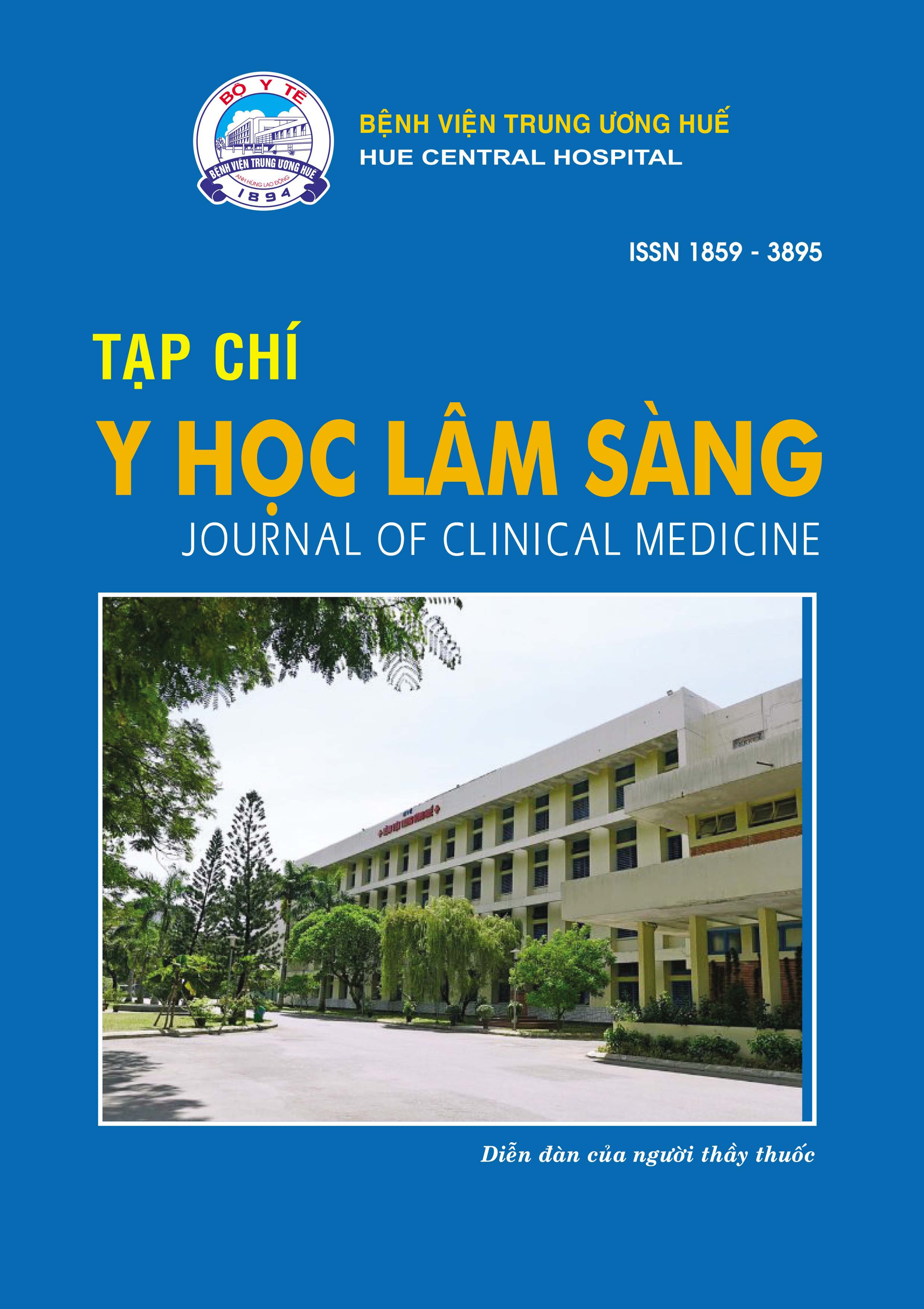Abstract
Objectives: To describe clinical characteristics and hs-Troponin I levels in pediatric patients with congenital heart disease. To determine some correlations between hs-Troponin I levels and the severity of the disease.
Methods: The Cross-sectional descriptive study of 51 patients with congenital heart disease identified based on color Doppler echocardiography, hospitalized at Pediatric center of Hue central Hospital from April 1, 2016 to June 30, 2017.
Results: The most common symptom was sweating (52,9%). For clinical signs, tachypnea and heart murmur > 3/6 accounted for the highest rate (72.5% and 76.5%). For complications: pulmonary arterial hypertension and heart failure were the highest eqully (70.6%), malnutrition (68.6%) and pneumonia (64.7%). The in creased concentration of hs-Troponin I accounted for 57,7% of total patients. There was a statistically significant correlation between the increase in hs-troponin I level and the severity of pulmonary
arterial hypertension, heart failure, and pneumonia.
Conclusion: The clinical features of congenital heart diseases are often manifested by the complications. There was a statistically significant correlation between the increase in hs-troponin I level and the severity of common complications.
References
Lê Thị Kim Dung, Nguyễn Thị Phượng (2011), «Phân loại tim bẩm sinh điều trị tại khoa NhiBệnh viện Đa khoa Trung ương Thái Nguyên»,
Tạp chí khoa học và công nghệ. 89(1), tr. 206 - 210.
Lê Hữu Dũng (2013), Nghiên cứu đặc điểm lâm sàng và xét nghiệm của tăng áp lực động mạch phổi ở trẻ em bị tim bẩm sinh có luồng thông trái-phải, Luận văn thạc sỹ y học, Trường Đại học Y Dược Huế.
Ông Kim Thành (2003), «Đặc điểm nhiễm trùng đường hô hấp dưới ở trẻ em bẩm sinh ở bệnh viện Nhi Đồng 2», Tạp chí Y Học TP. Hồ Chí
Minh. 7(1), tr. 176 - 182.
Agata T., Wanda F. (2012), «The Evaluation of Diagnostic Role of Cardiac Troponin T (cTnT) in Newborns with Heart Defects», The Scientific World Journal. 2012, pp. 1 - 6.
Kayali S. et al. (2015), «Effect of Pulmonary Hypertension Related Congenital Heart Disease with Left to Right Shunt on the Serum Levels of
High Sensitive Cardiac Troponins in Children», The American Journal of Cardiology. 115 (1), pp. 163.
Koerbin G.L. (2014), High sensitivity troponin: its use in diagnosis of cardiac dysfunction, University of Canberra: Faculty of Education, Science, Technology & Maths.
Mohamed O.H. (2015), «Myocardial Injury in Children with Unoperated Congenital Heart Diseases», Cardiology Research and Practice,
pp. 1 - 5.
Uner A., Dogan M. et al. (2014), «The evaluation of serum N-terminal prohormone brain-type natriuretic peptide, troponin-I, and high-sensitivity C-reactive protein levels in children with congenital heart disease», Hum Exp Toxicol. 33(11), pp. 1158 - 66.
Xue Y., Clopton P., Peacock W. F. et al (2011), «Serial changes in high-sensitive troponin I predict outcome in patients with decompensated heart failure», Eur J Heart Fail. 13(1), pp. 37 - 42
| Published | 24-01-2025 | |
| Fulltext |
|
|
| Language |
|
|
| Issue | No. 61 (2020) | |
| Section | Original article | |
| DOI | 10.38103/jcmhch.2020.61.10 | |
| Keywords | hs-Troponin I, bệnh tim bẩm sinh hs - Troponin I, congenital heart disease |

This work is licensed under a Creative Commons Attribution-NonCommercial-NoDerivatives 4.0 International License.
Copyright (c) 2020 Journal of Clinical Medicine Hue Central Hospital

